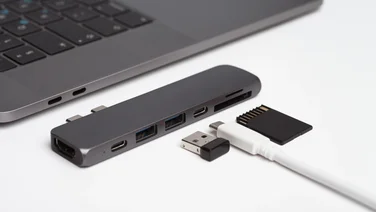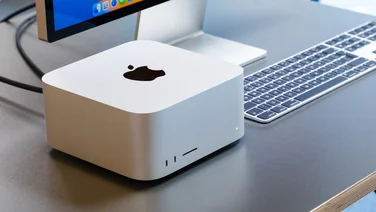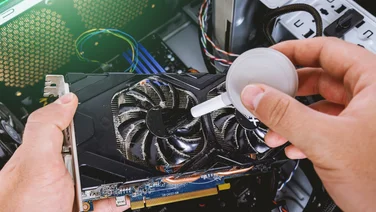To help us provide you with free impartial advice, we may earn a commission if you buy through links on our site. Learn more



The Vibox Juggernaut is a tank of a PC, packed with powerful components that make it a top-notch performer when it comes to both gaming and raw processor power. It’s a hefty beast, with a rugged case that looks like it drove in on caterpillar tracks. Although the PC is liquid-cooled, it’s not particularly quiet – the cooling system makes a rather grating grinding sound which is audible through the perforated grilles in the side panel. The side grilles also lack protective mesh to minimise the amount of dust and fluff that gets into your PC, although the front and bottom ones are covered.

The system is powered by a 700W Corsair PSU. Between the processor, liquid cooling and extremely powerful graphics card, packing in the power here makes good sense. The processor is an Intel Ivy Bridge Core i5-3750K, overclocked to 4.4GHz. It’s not the fastest overclock of this processor that we’ve seen, but it’s certainly effective, producing an overall score of 143 in our benchmark tests. The graphics card also proved itself to be very capable. It’s a 2GB Nvidia GeForce GTX 670 with two DVI, one HDMI and one DisplayPort output. In our standard 3D graphics tests, the card achieved frame rates of 107fps in Dirt 3 and 44.7fps in Crysis 2. Even the keenest of gamers won’t need to upgrade for a reassuringly long time.

The system is also equipped with 16GB of 1,600MHz RAM in 8GB modules, which leaves two free memory slots. The only PCI slot is occupied by an 802.11n Wi-Fi card, which unfortunately doesn’t support the 5GHz band. There are three PCI-E x1 slots, but one’s entirely blocked by the graphics card. Another is located uncomfortably close to the graphics card’s cooler, limiting what you can fit there, but that still leaves a third that’s entirely unimpeded by other hardware. On top of that, there are three PCI-E x16 slots. The one that houses the graphics card actually runs at x16. The other two run at x8 and x4 speeds. Bear in mind that if you use the x8 slot, the PCI-E x16 slot will also drop to x8, as they share bandwidth.
The motherboard has eight SATA ports. Four are SATA3 and the other four are SATA2. There’s also an mSATA port on the board for an ultra-small mSATA solid state drive to act as a cache for the main hard disk, but you’ll lose the use of one of the SATA2 ports if you connect anything to it. The case provides plenty of physical capacity to add extra storage, too. We’re fans of the easy installation and sound dampening of its 3 1/2in drive caddies. Two of them are in use, occupied by the 128GB SATA3 SSD boot drive and the 2TB storage hard disk, but that still leaves four vacant drive bays. There’s also room for another three 5 1/4in drives below the Blu-ray reader.
It’s great to see so much scope for future expansion, although with a total 2128GB of storage space, it’ll be a long time before you even have to think about adding capacity. The operating system drive is a little small, given that Windows 7 occupies about 50GB on its own, but it’s large enough for a fair bit of software and its 6GB/s SATA3 speeds make for fast boot and access times.

The PC’s front ports and buttons are located on the top of the case and include two USB2 ports, an eSATA port and 3.5mm mic and headphone ports. At the back are another two USB2 ports and six USB3 ports, alongside a PS/2 mouse and keyboard port, Gigabit Ethernet and audio ports including both 7.1 analogue outputs and an optical S/PDIF connection.
This is an unquestionably powerful PC, but at £1,300, it’s more expensive than the award-winning Palicomp Alpha Detonator, which is similarly specified but has a quicker graphics card, making it the slightly better-value PC. Vibox also only provides a one year RTB warranty, compared to Palicomp’s three years.





